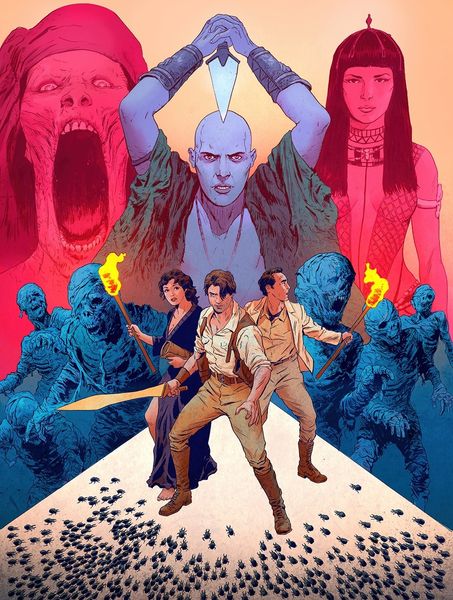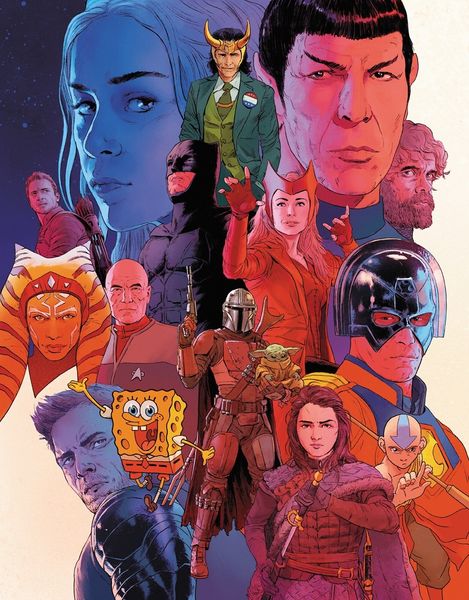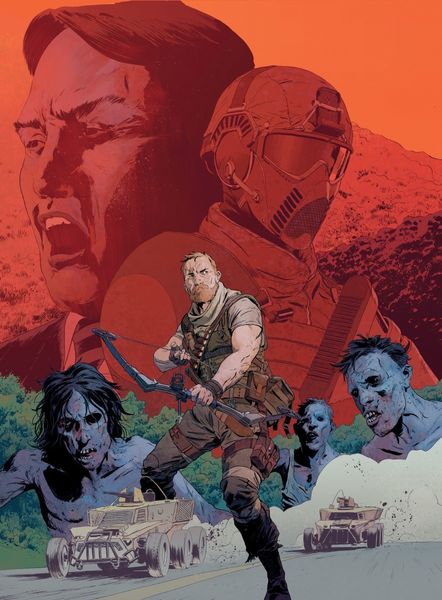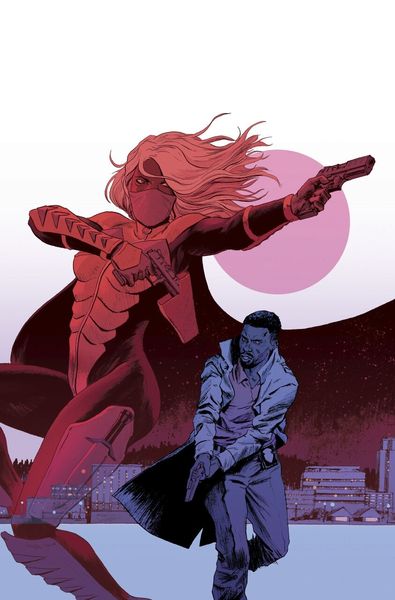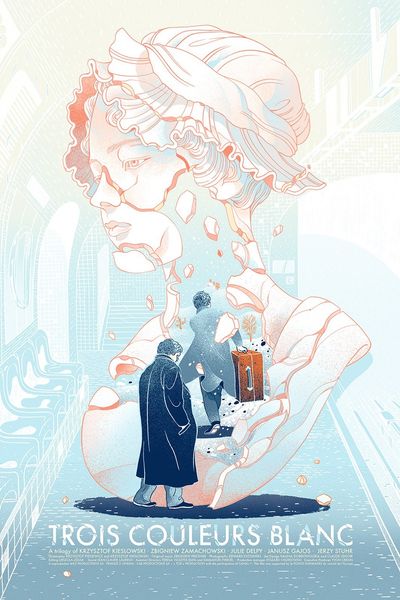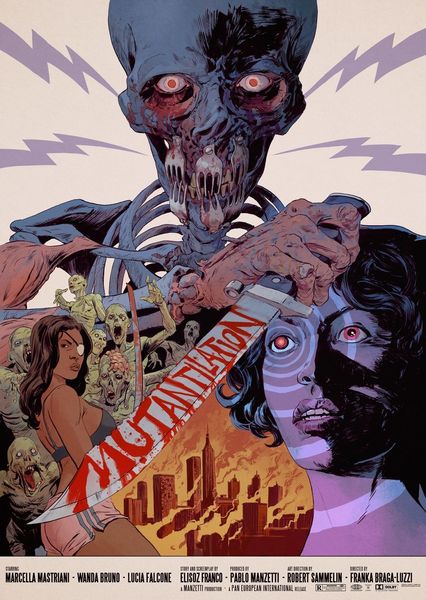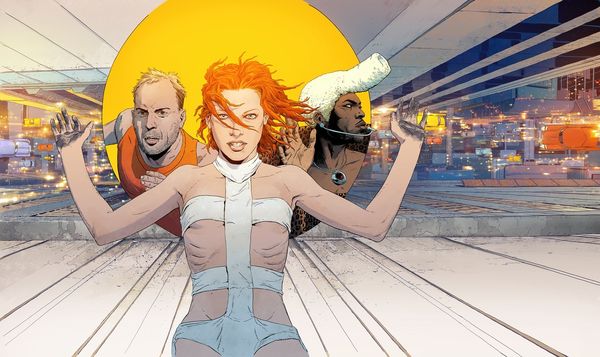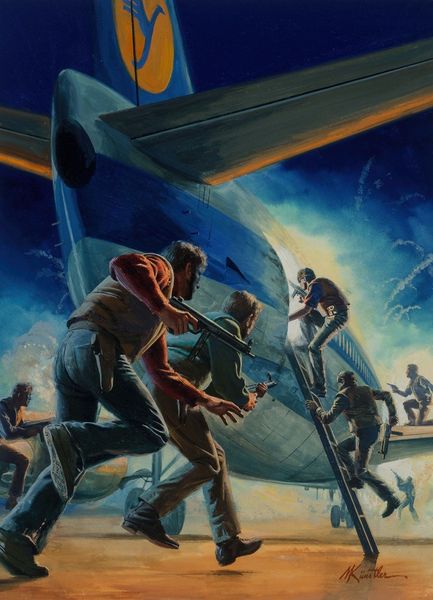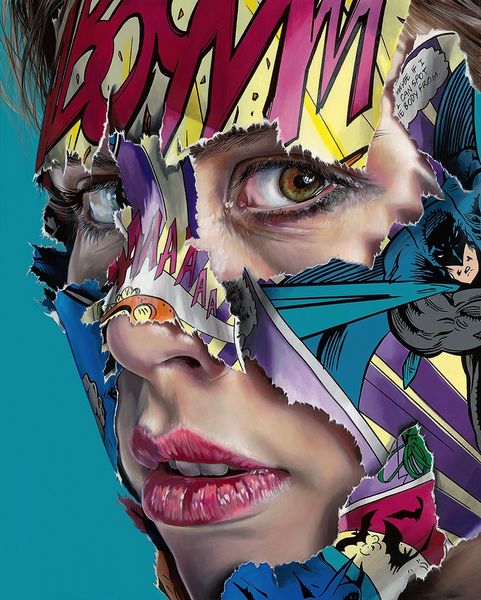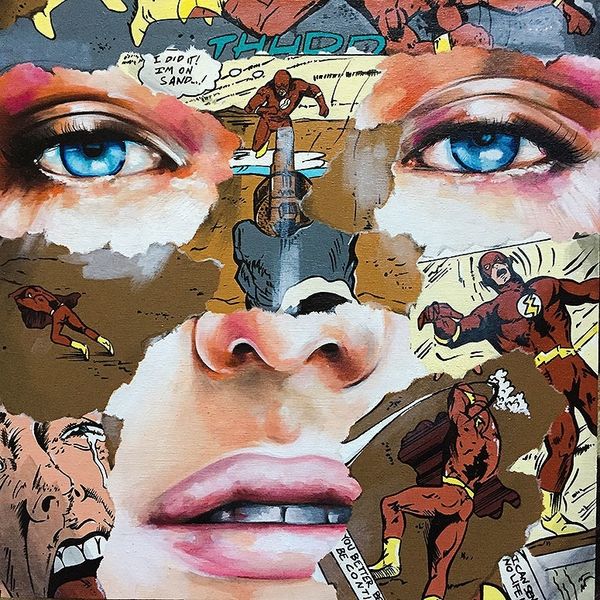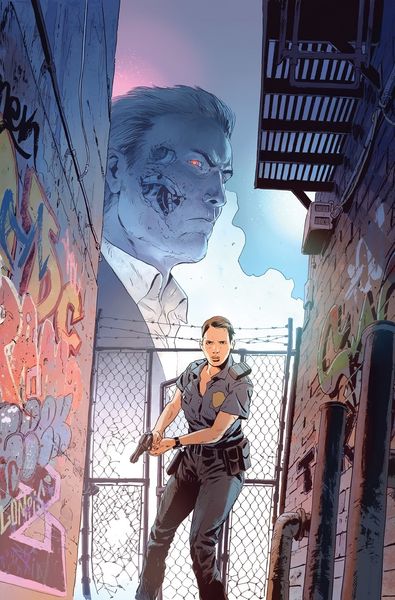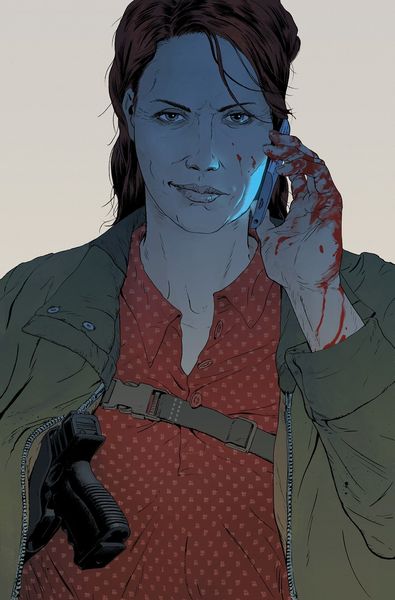
Copyright: Modern Artists: Artvee
Curator: Standing before us is "WIRED – Know Your Enemy" by Robert Sammelin, created in 2017. It strikes me as a visually arresting piece. Editor: Yes, my initial reaction is intrigue mixed with a bit of dread. The figures rendered in these stark blues and reds against the pale backdrop feel cold and authoritative. Is it a dystopia? Curator: In some ways, I believe so. Sammelin, known for his digital illustrations often exploring science fiction and dystopian themes, presents what can be interpreted as a powerful, looming force. The visual style definitely plays into a contemporary, pop-art influenced commentary on authority and power structures. Editor: Absolutely. The construction of the piece, with its almost graphic novel quality, seems intentionally detached. I wonder about Sammelin’s process here. The lines are so clean, the color palettes controlled, suggesting digital tools dominating traditional mediums and their tactile messiness. What is labor really in creating images of power like this? Curator: That's a very insightful point about labor. The precision certainly speaks to digital craft and its detachment. We should also consider the visual lineage here. There's a noticeable nod to propaganda art and poster design of the 20th century. Editor: Good call. The way those figures at the bottom—a mix of the seemingly ordinary and the overtly militaristic—are lined up suggests mass production, and the easy consumption of imagery shaping ideologies. What really sticks out are the almost swarm-like flies around the central figure; are these simply vectors of death or propaganda in service of a deadly ideology? Curator: Yes! The presence of these details allows the viewer to consider who these figures are meant to influence and who they perceive as an enemy. Its title certainly prompts reflection on this enemy's potential origins. I’d venture to guess this imagery asks a very important question: Are they us? Editor: The more I look, the more those color choices, and clean compositions bring this back to commodity: the design, dissemination, and digestion of 'enemy' archetypes packaged for consumption. It makes you really consider the manufacturing of consent that's implied in such polished dystopias. Curator: Indeed. Considering how images circulate and their capacity to condition how we see the world, it becomes even more crucial to interpret how such messages construct, or deconstruct ideas about belonging and 'otherness'. Editor: It all resonates on deeper levels than I first thought, especially given the material coldness of the media used. This certainly moved beyond striking colors into making me re-think the material roots of cultural products. Curator: I'll carry with me the questions it poses around image and power; it might well change the way I walk into museums from now on.
Comments
No comments
Be the first to comment and join the conversation on the ultimate creative platform.
